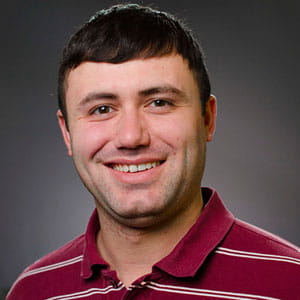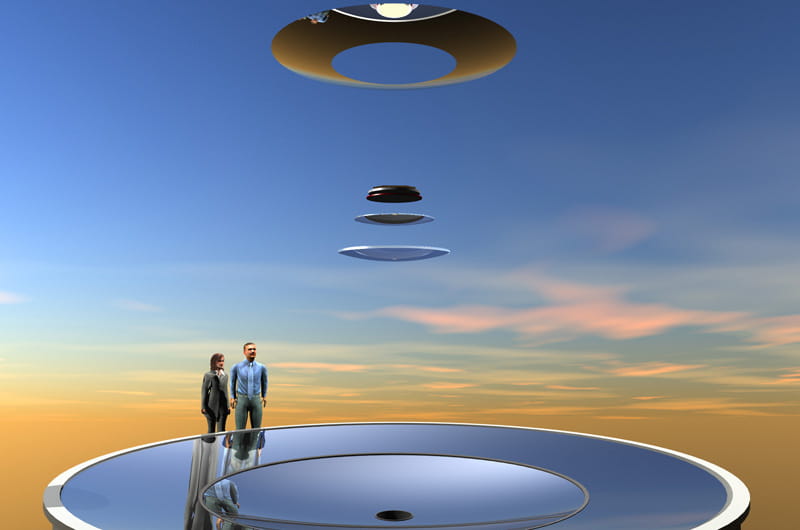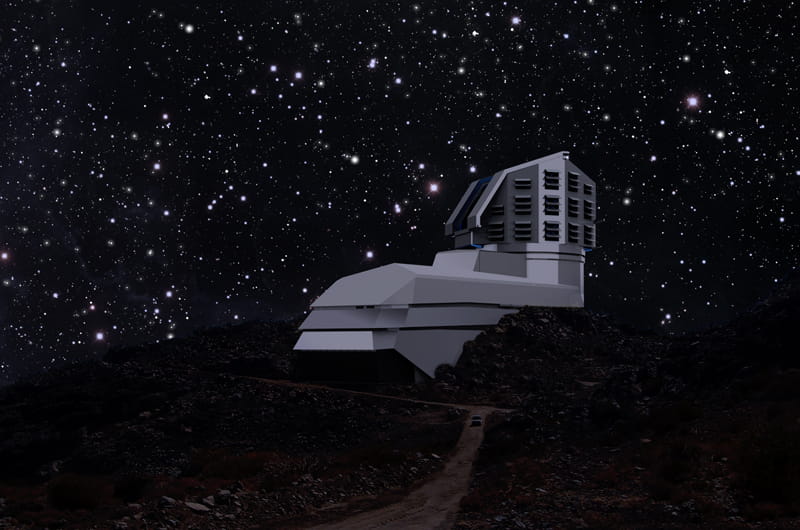A Galaxy Far, Far Away: Drexel Professor to Use New Telescope to Map Beyond Milky Way
 By Frank Otto
By Frank Otto

- Drexel Selects New, World-Class Life Sciences Building at 3201 Cuthbert Street for Medical Research Operations
- Breakthrough on Gene Therapy for Hereditary Spastic Paraplegia
- Drexel Environmental Collaboratory Releases Cross-Sector Findings on Severe Weather Recovery Challenges
- Drexel Launches the Manuel Stamatakis Center for Alternative Investments at the LeBow College of Business

In astronomy’s modern history, large-scale work was almost exclusively done at institutions with giant observatories and the most expensive computers and equipment.
But a new approach to work in the field now has Drexel faculty playing a key role in what could be the most expansive approach to mapping the universe.
“Astronomy has kind of undergone a significant shift in the last 20 years or so,” said Gordon Richards, PhD, a professor in Drexel’s College of Arts and Sciences. “Before, everything was done by the top five institutions because they were the only ones who had the money for the big toys. The advent of collaborative projects has changed that.”
In a joint project between the National Science Foundation (NSF) and the Department of Education (DOE) that will also feature dozens of higher learning institutions — like Drexel — a giant telescope featuring an 8.4-meter mirror will be constructed in the Cerro Penchón ridge in Chile.
Called the Large Synoptic Survey Telescope (LSST), it will have the capability of taking a full survey of the entire night sky in a matter of three days. In addition to conducting an active and continual survey of the universe for 10 years, the LSST will be used to track the movement of potentially hazardous asteroids (a directive from Congress), confirm the identity of previously unclassified objects, and to get a better idea of how the universe is put together.

Construction began on the telescope site earlier this year and science operations will begin in 2022.
Richards was involved in an earlier “mapping” project called the Sloan Digital Sky Survey, which created a comprehensive digital image of the night sky by taking images between 1998 and 2009. In astronomy’s past, such sky “maps” were only available on glass plates at the site of the telescope.
“You can put the whole thing on a disk and share it with all your friends,” Richards said of the Sloan map. “That was the 800-pound gorilla in the room for the longest time. That [survey] was the great leveling thing.”
Because of his involvement with the Sloan Survey, Richards has become one of the team members shaping the way the study will be conducted when it begins in 2022. Richards is specifically a leader of the team that will analyze the data that comes from outside our galaxy, the Milky Way.
With a particular interest in quasars — super bright discs of light that result from the intense gravitational pull of black holes — checking out the “extragalactic” portions of the data is a perfect fit for Richards.
“Quasars are really great tools for all sorts of science,” he said. “You can use them to see all the way back to the time of the Big Bang.”

Speed will be a hallmark of the LSST.
“The Sloan Digital Sky Survey was a project to make a single ‘map’ of the sky. It took many years to complete,” Richards said. “LSST will completely redo the work of the Sloane project every three days. So instead of a picture, you have a movie of the sky.”
Taking multiple images of the entire sky over a decade allows for the team involved to track the movement of objects, among other astral occurrences.
“Lots of things in space change over time,” Richards explained. “Stars explode, asteroids move, things get brighter.”
In preparation for the project, Richards is among those running simulations of data. They have a good idea of what they will likely see in the sky, so that knowledge allows them to construct code to use in processing the huge amount of data the telescope will bring in. With codes in place, the scientists will be ready to measure what they’re interested in and not get lose in the torrent of information.
“You have to be ready when the camera turns on,” Richards said.
Saying that the LSST is “the definition of big data,” Richards hopes to get other Drexel faculty members involved. With so much raw data, Richards believe others might be able to dig in and pick up on something an astronomer might miss.
Slated to begin roughly a decade after his work with the Sloan project concluded, Richards sees the LSST as an opportunity to wrap up unanswered questions.
“There’s stuff that we wanted to do in the first project that we just ran out of time for,” Richards said. “We want to find out how galaxies form. Some are like ours, the Milky Way, and some look like big, red footballs. We think some of it has to do with black holes, but with more of the sky visible to us, there’s so much more we can find out.”
Until the end of January, Charles Simonyi and Bill Gates will match up to $500,000 in donations to the LSST. Find out more here.
Financial support for LSST comes from the National Science Foundation (NSF) through Cooperative Agreement No. 1258333, the Department of Energy (DOE) Office of Science under Contract No. DE-AC02-76SF00515, and private funding raised by the LSST Corporation. The NSF-funded LSST Project Office for construction was established as an operating center under management of the Association of Universities for Research in Astronomy (AURA). The DOE-funded effort to build the LSST camera is managed by the SLAC National Accelerator Laboratory (SLAC).
In This Article
Contact
Drexel News is produced by
University Marketing and Communications.